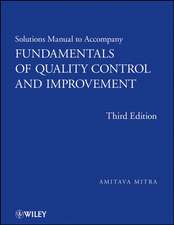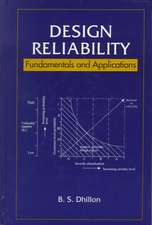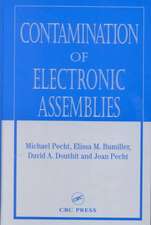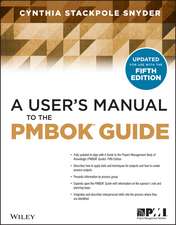Performance Evaluation of Industrial Systems: Discrete Event Simulation in Using Excel/VBA, Second Edition
Autor David Elizandro, Hamdy Tahaen Limba Engleză Hardback – 11 apr 2012
Based on this foundation, the second edition, now titled Performance Evaluation of Industrial Systems: Discrete Event Simulation in Using Excel/VBA incorporates the use of discrete simulation to statistically analyze a system and render the most efficient time sequences, designs, upgrades, and operations. This updated edition includes new visualization graphics for DEEDS software, improvements in the optimization of the simulation algorithms, a new chapter on queuing models, and an Excel 2007 version of the DEEDS software. Organized into three parts, the book presents concepts of discrete simulation, covers DEEDS, and discusses a variety of applications using DEEDS.
The flexibility of DEEDS makes it a great tool for students or novices to learn concepts of discrete simulation and this book can form the basis of an introductory undergraduate course on simulation. The expanded depth of coverage in the second edition gives it a richness other introductory texts do not have and provides practitioners a reference for their simulation projects. It may also be used as a research tool by faculty and graduate students who are interested in "optimizing" production systems.
Preț: 1130.51 lei
Preț vechi: 1378.67 lei
-18% Nou
Puncte Express: 1696
Preț estimativ în valută:
216.35€ • 234.92$ • 181.73£
216.35€ • 234.92$ • 181.73£
Carte tipărită la comandă
Livrare economică 22 aprilie-06 mai
Preluare comenzi: 021 569.72.76
Specificații
ISBN-13: 9781439871348
ISBN-10: 1439871345
Pagini: 504
Ilustrații: 578 b/w images and 109 tables
Dimensiuni: 178 x 254 x 33 mm
Greutate: 1.07 kg
Ediția:Revizuită
Editura: Taylor & Francis
Colecția CRC Press
Locul publicării:Oxford, United Kingdom
ISBN-10: 1439871345
Pagini: 504
Ilustrații: 578 b/w images and 109 tables
Dimensiuni: 178 x 254 x 33 mm
Greutate: 1.07 kg
Ediția:Revizuită
Editura: Taylor & Francis
Colecția CRC Press
Locul publicării:Oxford, United Kingdom
Public țintă
Business and manufacturing managers, industrial engineers, product designers, those working with discrete simulation models, and upper level undergraduate and graduate students.Cuprins
Simulation Fundamentals. Simulation Modeling. Probability and Statistics In Simulation. Elements of Discrete Simulation. Gathering Statistical Observations in Simulation. Overview of Deeds. Network Representation. ExcelNBA and Design Environment for Discrete Event Simulation. VBA. User Interface. Modeling Procedures. Simulation Output. Analysis of Simulation Results. Model Visualization. Modeling Special Effects. Advanced Routing Techniques. Applications. Model Design And Development. Facilities Layout Models. Material Handling Models. Inventory Control Models. Scheduling Models. Maintenance Models. Quality Control Models. Supply Chain Logistics Models. Analysis of Large Scale Models. Appendix A: DEEDS Add In Installation. Appendix B: Simulator Quick Guide. Appendix C: Histograms with Excel.
Notă biografică
David Elizandro, Tennessee Tech University
Hamdy Taha, University of Arkansas
Hamdy Taha, University of Arkansas
Descriere
Discussing fundamental modeling tools, queuing theory, and discrete event simulation for evaluating production systems, this book presents a development environment for discrete event simulation in a language easy enough to use but flexible enough to facilitate modeling complex systems. Incorporating the use of discrete simulation to statistically analyze a system and render the most efficient time sequences, designs, upgrades, and operations, this new edition develops new visualization graphics for DEEDS software, includes improvements in the optimization of the simulation algorithms, and adds a chapter on queuing models.










